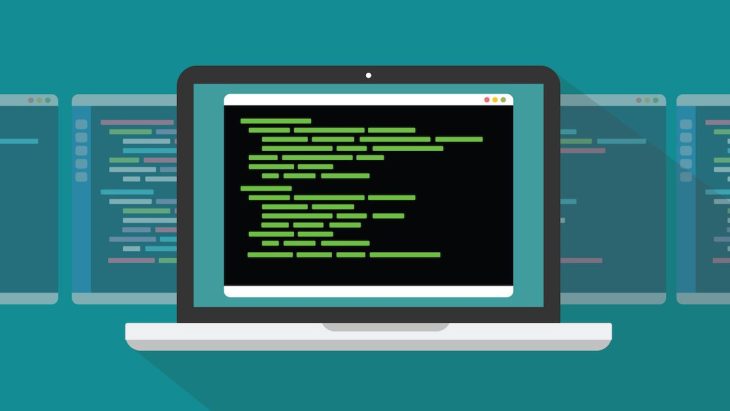In a move to enhance the developer experience, Amazon has acquired Fig, a startup specializing in building autocomplete for the command line. Fig offers tools such as autocomplete that provide customizable suggestions and descriptions for developers as they type commands, making it a valuable time-saving resource. The acquisition aligns with Amazon’s focus on generative AI and their aim to transform the way customers build with the help of artificial intelligence. Fig already boasts thousands of users from prominent organizations, including Google, Microsoft, and Amazon itself, which may have influenced Amazon’s decision to acquire the startup. While the long-term implications for developers using other cloud providers remain unclear, Fig has assured existing users that they will still be able to use the platform and receive support during the integration process with AWS.

The Importance of the Command Line Interface (CLI)
The command line interface (CLI) may seem outdated in a world dominated by graphical user interfaces (GUI), but it remains a crucial tool for developers. The CLI offers a text-based approach to interacting with an operating system, providing flexibility, speed, and efficiency for those who are familiar with its commands. While GUIs can be visually appealing, the CLI consumes fewer system resources, making it an attractive option for developers who want to optimize their workflow.
Fig, a startup that has been making waves in the developer community, recognizes the value of the CLI and has set out to enhance its capabilities. By integrating features typically found in integrated development environments (IDEs), Fig aims to create a more user-friendly and intuitive CLI experience. One of its standout offerings is the “autocomplete” feature, which provides customizable suggestions and descriptions as developers type commands, saving time and reducing repetitive keystrokes.
Fig’s Pricing Model
Fig offers a range of pricing plans to cater to different types of users. The company provides a basic free tier for hobbyists and small teams, allowing them to experience the benefits of Fig’s autocomplete feature. Additionally, Fig offers paid plans with premium features targeted at larger businesses and enterprises. However, in light of the recent acquisition by Amazon, Fig has announced that it will be making all paid features completely free for its existing users. This move demonstrates Fig’s commitment to providing value to its user base and aligns with Amazon’s vision of enhancing the developer experience.
Amazon’s Interest in Fig’s Technology
Amazon’s acquisition of Fig signifies its recognition of the value and potential of Fig’s technology. According to Fig CEO and cofounder Brendan Falk, the acquisition aims to combine Amazon’s expertise with Fig’s capabilities to further enhance the developer experience. One significant aspect that may have attracted Amazon to Fig is the growing importance of generative AI in the developer tooling space.
Generative AI has the ability to automate repetitive tasks and provide helpful suggestions to developers, streamlining their workflow. Fig’s autocomplete feature aligns with this trend and offers similar benefits to tools like GitHub’s Copilot. By acquiring Fig, Amazon can leverage its generative AI ambitions and integrate Fig’s technology into its cloud subsidiary, Amazon Web Services (AWS).
The Role of Generative AI in the Acquisition
Generative AI represents a significant technological shift that has the potential to revolutionize the way developers build applications. By utilizing AI algorithms, generative AI tools can assist developers by providing intelligent suggestions and helping automate tasks. Fig’s autocomplete feature is a prime example of generative AI at work, providing developers with real-time suggestions and descriptions as they type commands.
With the acquisition of Fig, Amazon aims to leverage the power of generative AI to enhance the developer experience within its AWS ecosystem. This move aligns with AWS’s previous efforts in the AI space, such as the launch of CodeWhisperer, an AI pair-programmer. By integrating Fig’s technology and expertise, AWS can stay competitive in the cloud market and continue to innovate on behalf of developers.

Fig’s User Base
Fig has garnered a significant user base comprising thousands of users from well-known organizations, including Google, Microsoft, and even Amazon itself. This widespread adoption speaks to the value that Fig’s technology brings to developers across different industries. The fact that Fig’s users include engineers from Amazon suggests that the technology caught the attention of those within the company, potentially motivating the acquisition.
Having a diverse user base is essential for Fig’s growth and development. The varied perspectives and use cases provide valuable feedback and insights that can help further improve the platform. With Amazon’s acquisition, Fig’s user base will likely expand even further, and the integration with AWS could potentially attract more developers looking to enhance their CLI experience.
Integration of Fig with AWS
The acquisition of Fig presents an exciting opportunity for both Amazon and Fig to collaborate and integrate their respective technologies. Fig’s autocomplete feature has the potential to enhance the developer experience within AWS by providing intelligent suggestions and reducing the time spent on repetitive tasks.
While Fig has clarified that existing users will still be able to use the platform and receive support, new signups will be temporarily put on hold as Amazon addresses the need to integrate Fig with AWS. Going forward, the integration of Fig’s technology with AWS could lead to more seamless workflows for developers and engineers using the AWS ecosystem, further solidifying Amazon’s position as a leader in cloud services.
Implications for Developers and Engineers
Developers and engineers can expect exciting developments as a result of the Fig acquisition. By leveraging Fig’s technology, Amazon has the potential to enhance its developer tooling and make the CLI experience within AWS more intuitive and efficient. The integration of generative AI capabilities into the CLI can empower developers to work more productively and focus on higher-level tasks, as automated suggestions and assistance streamline their workflow.
This acquisition also raises questions about the implications for developers and engineers working with other cloud providers. As Fig integrates with AWS, developers familiar with other platforms may need to adapt to new workflows and tools. It remains to be seen how this integration will affect the broader developer community, but advancements in generative AI and enhanced CLI experiences are promising for developers across the board.
Future Plans for Fig and AWS
At present, there is limited information about the specific future plans for Fig and AWS. Fig’s CEO, Brendan Falk, mentioned in a blog post that there are no updates to share on future plans at this time. However, he emphasized the commitment to innovation in the terminal/shell space and reassured existing Fig users that they will continue to receive support.
Moving forward, the integration of Fig’s technology with AWS opens up possibilities for further advancements in the CLI experience. Amazon’s focus on generative AI and its desire to transform the way developers build applications suggests that Fig’s technology will play a crucial role in shaping the future of AWS developer tooling. Developers can anticipate exciting updates and improvements as Fig and AWS work together to enhance the developer experience.
Seeking Clarification from Amazon
As with any acquisition, there may be questions and uncertainties regarding the implications and future plans for Fig and AWS. TechCrunch has reached out to Amazon for clarification on the acquisition and its significance. While there are no immediate updates, it is expected that Amazon will provide more information in due course.
As the integration progresses, developers and engineers eagerly await further details on how Fig’s technology will be utilized within AWS and the potential benefits it will bring to their workflow. Clarification from Amazon will help shed light on the strategic motivations behind the acquisition and offer insights into what developers can expect in the future.










